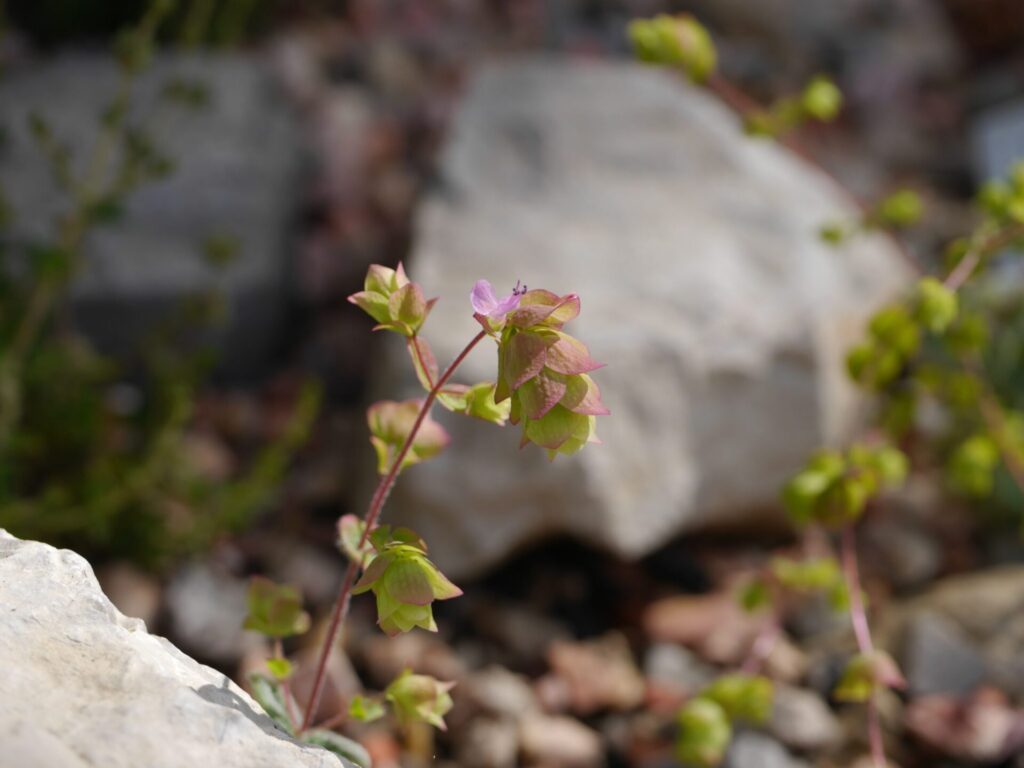Dittany of Crete
Origanum dictamnus L.
Lamiaceae
Dictamne is a species of oregano found only in the mountains of Crete, in the steepest places, often on the cliff walls. The Cretans also call it Erontas, the herb of love. Its harvest is so perilous that it is a proof of courage and love for the young engaged to gather a bit for their future wife.
The plant has been used since antiquity and appears on an antique fresco dating from 1500 BC. The Roman author Pliny quotes the Dictamne in his “natural history” (circa 70 AD). For this naturalist, it is the hinds who taught us the healing and vulnerable virtues of dictamne, by eating this plant to cure the arrows of the hunters. The poet Virgil also evokes these properties in the Aeneid (-20 BC) Venus goes to Crete to find some strands of dictamne to heal her son Aeneas, wounded by an arrow.
Pliny also mentions its use to facilitate childbirth, “Dictamne is a specific first-rate for women. It eases menstruation, eases the way out for children… even those that are upside down. Such is its efficacy on this point that one is careful not even to carry it in a room where a woman is about to give birth”. In herbalism, Dictamne is little used in France, but in Greece, and particularly in Crete, it is a universal remedy. The plant is harvested as a flower and prepared in infusion or decoction, for digestive or respiratory problems, infections or difficulties in giving birth.
Dictamne is little used in France, but in Greece, and particularly in Crete, it is a universal remedy. The plant is harvested as a flower and prepared in infusion or decoction, for digestive or respiratory problems, infections or difficulties in giving birth. In external use, the infusion is used to wash wounds, stimulate healing, relieve pain or bruises. Dictamne is used in natural cosmetics for its anti-oxidant and soothing properties and its regenerating properties for the skin. Dictamne has always been a rare plant.
Dictamne has always been a rare plant.
Pliny mentions that “the dictamne is not found elsewhere than in Crete… In Crete itself, it only grows on a small surface of land … and only in wild places.”
Victim of its excessive harvests and overgrazing, the plant has regressed much and remains only in the most inaccessible places of the island. It is on the list of vulnerable species (Red Book of the flora of Greece).
Dictamne is now cultivated, which allows us to enjoy its virtues without putting the species in danger.
Its cultivation is possible in the south of France. It likes well-drained soils or rock gardens because it cannot stand the winter humidity. Under these conditions, Dictamne resists unhindered at temperatures of up to -10 °.
You can see it in the garden of the Herbier du Diois where it was introduced in 2014.
Healing balm
Placez dans un bocal des sommités de dictamne sans les tasser trop.
Verser de l’huile d’olive chauffée (vers 60°) jusqu’à recouvrir les plantes.
Laisser pendant trois semaines.Filtrer avec un filtre à café.
Placer dans un bol 30 ml de cette huile avec 5 grammes de cire d’abeille.
Faire chauffer au bain-marie jusqu’à ce que la cire soit fondue, remuer avec une fourchette.
Verser dans un pot et étiqueter.A utiliser pour toute la famille.
A utiliser dans l’année et à conserver au frais après ouverture
